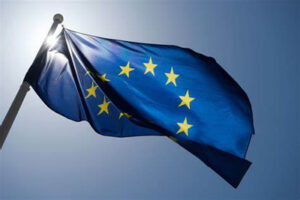Poland proposes banning Russian rubber products into the EU
Moscow, Russia – Poland has proposed to the European Commission that the European Union’s tenth package of sanctions against Russia include an embargo on certain Russian products, including rubber, the Polish Press Agency reported.
The EU has already banned imports of tires from Russia and exports of certain materials for the tire industry in the country.
Synthetic rubber consumption in the EU totals about 1.6 million tonnes per year, 0.9 million tonnes of which are imported, Vygon Consulting’s Artyom Lebedskoi-Tambiyev said. Russian synthetic ruble exports to the EU totalled 0.5 million tonnes, or more than half of EU imports, in 2021, but fell by half in 2022 and amounted to about 30% of EU imports.
The CEO of Tire Industry Research, David Shaw said Russian rubber exports to the EU are already falling.
One of the key materials in this category is butadiene rubber, of which the EU historically imported about 110,000 tonnes per year from Russia, he said. In November, these imports totalled just 1,400, or the equivalent of less than 17,000 tonnes per year. The same is true for halobutyl rubber: Russia previously exported about 65,000 tonnes to 27 EU countries, but in November shipments fell to 2,100 tonnes or the equivalent of 26,000 tonnes per year, Shaw said.
Tire producers in Europe are trying to lower risks related to Russian components in their supply chains, he said.
In early March 2022, some European tire plants were even forced to close for a couple of days because of the disruption of Russian and Ukrainian shipments of carbon black, which increases the service life of tires. Prior to the conflict, Russia accounted for about a third, or 500,000 tonnes per year of the carbon black used in the EU, but not it accounts for about 20,000 tonnes per month, or the equivalent of 240,000 tonnes per year, Shaw said.
He said supply chains have now stabilized and many tire manufacturers have reduced risks related to their Russian suppliers, arranging alternative sources of supply in case of further disruptions.
It recently emerged that Polish synthetic rubber supplier Synthos SA is lobbying the EU to completely ban imports of all rubber materials from Russia to Europe. This will probably not cause serious disruptions, since tire producers have worked out plans in case of unforeseen circumstances, but it will be inconvenient, Shaw said.
There are a number of families of synthetic rubber, such as butadiene rubber and halobutyl rubber, but each family has several grades and different suppliers make different grades, he said. Even when two grades are nominally identical, there are differences in how the materials behave in tire mounting equipment, and tire makers like to stick with a certain supplier for any class, but they can adjust if necessary, Shaw said.
All tire makers are likely ready for heightened risk for supply chains involving Russian suppliers, he said.
There is sufficient capacity in the world and even in Europe, even in the event of a complete ban on Russian rubber, but prices in Europe will go up because of more expensive raw materials, Shaw said.
Lebedskoi-Tambiyev said that the EU has sufficient production capacity for most types of rubber, but higher prices for raw materials have led to a significant increase in production costs.
As a result, these plants lag far behind Russian ones in terms of cost efficiency, he said. Poland’s Synthos Group has idled 30% of its capacity in the EU amid the growth of energy costs, which in future could lead to a rubber shortage in the EU if imports from Russia are reduced, and further price increases, Lebedskoi-Tambiyev said.
The main customers for Russian rubber are tire plants in Germany, Italy, Hungary, the Czech Republic and Romania. They are accustomed to using rubber from Russia, so replacing it will be costly and time-consuming, Lebedskoi-Tambiyev said.

